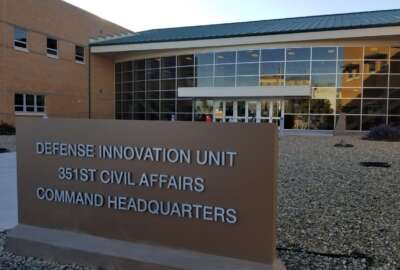DoD’s new R&D chief prioritizes moving prototypes to real-world applications
Heidi Shyu, the new undersecretary of Defense for research and engineering, says one of her first tasks is to develop a clear picture of what DoD's innovation...
Across the sprawling Defense bureaucracy, it’s not a stretch to say there are dozens of different organizations who each see themselves at the forefront of buying or building innovative technologies. So it makes a certain degree of sense for the Pentagon’s top technology official to start her tenure by asking who’s working on what.
Heidi Shyu, the undersecretary of Defense for research and engineering, says one of her top priorities since being sworn in three months ago has been to build a better understanding of what’s actually happening across DoD’s vast innovation ecosystem — not just for the benefit of her own office, but for those working inside the military services and DoD’s various innovation organizations.
To the greatest extent possible, she said, she wants to limit the number of Defense R&D dollars and time that go toward reinventing the wheel.
“We’re looking across the entire DoD to look at all the different innovation activity that’s ongoing. I’d like to get my arms around just how many innovation organizations that we have,” she said during an interview with Federal News Network at the annual Association of the U.S. Army conference. “We’re asking questions like, ‘What is your mission? What have you procured? What capabilities do these products have? What have you transitioned into the hands of the warfighter, and which company are you buying these products from?’ The second piece I would like to understand is what the best practices are in each organization. If we can share those across the board, that would be valuable.”
The discovery process is happening under the auspices of DoD’s Innovation Steering Group, which Deputy Defense Secretary Kathleen Hicks established earlier this year. Hicks appointed Shyu to lead the group after she took the post as undersecretary and chief technology officer in June.
In a related effort, Shyu said she has also begun asking the military services for specific prototype technologies that could fill “capability gaps” that have already been identified as joint requirements for the Pentagon.
After working with the Joint Staff and DoD’s global combatant commands to identify which requirements needed to be met most urgently, Shyu said the steering group got 203 white papers from the military services over the course of just five weeks, identifying prototypes they’d already started developing that could fill those gaps. Her office has recommended that 32 of them be funded and tested in joint exercises next fiscal year.
“We’ve briefed what we’re planning to do, and we were given the thumbs up. So one of the key things we’re doing now is going through the detailed planning. All the details of planning will be done in Fiscal 2022 to enable the execution in FY 23,” she said. “But the thing that’s exciting is three of those projects are actually joint projects with our allies. We definitely want to partner with allies and partner nations to be able to deliver capabilities much quicker.”
Ultimately, Shyu wants the outcome of those efforts to be a much easier discovery process for anyone in the Defense Department who’s looking for a particular capability. As of now, there’s no easy way for a program office to find out whether one of its counterparts is working on — or has already solved — an individual technology problem.
“R&E looks across every service. We’ve already gone to the Air Force, the Navy, the Marines, the Army, the [Defense Innovation Unit] and the [Strategic Capabilities Office] to try to understand what process they utilize and what companies they have gone out to,” she said. “So all of those things will be pulled together. We’d like to create a database we can tap into so that I can basically Google for a specific capability or product. Right now, you’re making a zillion phone calls.”
To the extent the department’s technology efforts are disjointed and decentralized, that’s not just a problem for DoD itself — but also for the sorts of nontraditional companies DoD said it wants to attract into its science and technology ecosystem. For small businesses, getting through the Pentagon’s front door has always been hard. Creating dozens of new and different doors doesn’t necessarily help, unless they’re well-marked.
Shyu, who previously served as assistant secretary of the Army for acquisition, logistics and technology during the Obama administration, said she learned that lesson directly during an interlude in private industry during the past four years.
“Having worked with a number of small companies on the outside, it made me really realize how difficult it is to work with the Pentagon,” she said. “You don’t know who to talk to, and there’s no focal point. You talk to Person A, who will refer you to Person B and then Person C, and vendors go around and around and around before they find someone to go talk to and who’s interested in what they have.”
Starting to catalogue the department’s capability gaps and innovation activities should help with that problem, Shyu said, even if DoD can’t always share the precise details of its most urgent capability gaps. The needs statements the Innovation Steering Group sent to the military services earlier this year, for example, were entirely classified.
“But once we get all of that information together, we can go the next step. Figuring out what we already have — pulling a database together to share across the board will speak volumes,” she said. “Then, we need to figure out if there is a specific entry point we need to highlight even more to the small businesses. It’s a stepwise process we’re going through.”
Copyright © 2025 Federal News Network. All rights reserved. This website is not intended for users located within the European Economic Area.
Jared Serbu is deputy editor of Federal News Network and reports on the Defense Department’s contracting, legislative, workforce and IT issues.
Follow @jserbuWFED






